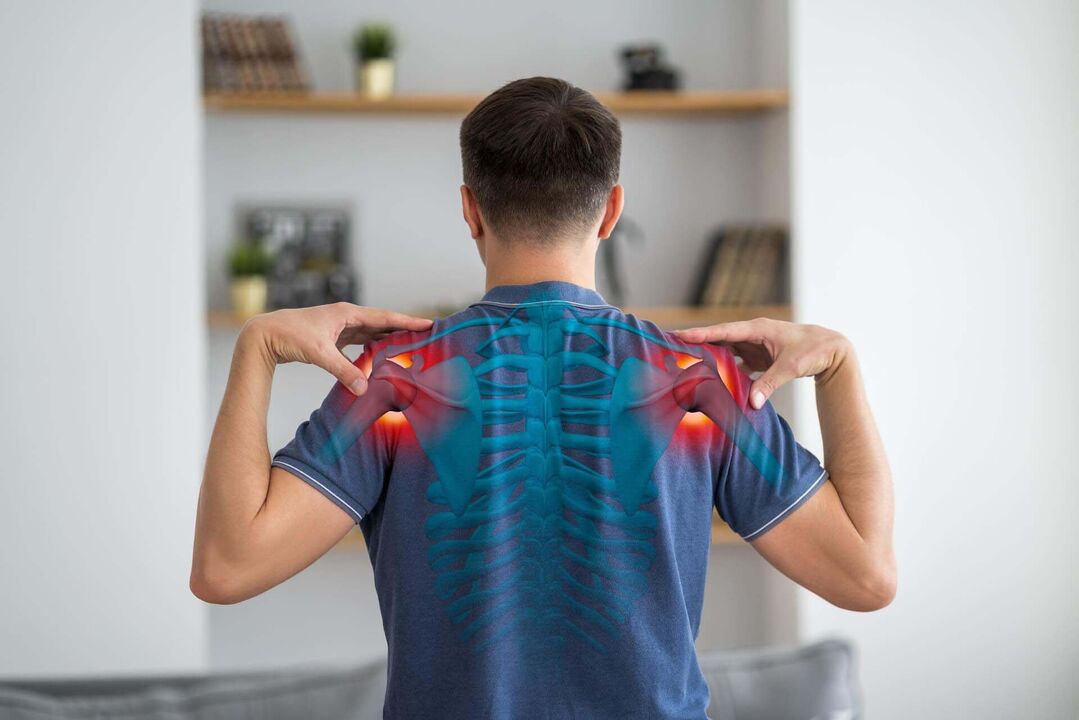
About disease
Types of Arthropathy of Shoulder Joint
- Primary arthropathy, in whose development genetics plays an important role, even the most thorough examination does not allow us to identify the most important cause of the disease;
- Secondary arthropathy is the result of unfavorable factors in the joints (trauma, endocrine diseases, damage to joint anatomy).
- Grade 1 - The cartilage matrix is swollen and broken down, but the integrity of the cartilage surface area has not been compromised;
- Second degree - the cartilage tissue cells located in the deep layers are affected, and the surface layer of cartilage is damaged;
- Third degree – vertical cracks in the cartilage plate;
- Fourth degree - the superficial layer of the cartilage plate gradually falls off, forming an erosive defect, and a cystic cavity appears in the underlying bone;
- Fifth degree - at this stage the underlying bones are exposed;
- Sixth degree - The subchondral area thickens significantly, the cyst becomes more pronounced, and marginal bone growth occurs.
Symptoms of shoulder arthritis
- Occurs at the onset of flexion, extension, or rotation;
- Increased during physical activity;
- Nocturnal character due to stasis of intraosseous venous blood;
- Presence of obstruction - sudden jamming of the joint due to separation of fragments of bone and cartilage separated between the joint surfaces;
- Weather Dependence - Pain that worsens when the weather changes (pain becomes more severe in humid and cold climates).
Causes of Shoulder Arthritis
- Modifiable - can be corrected;
- Unmodifiable - it is impossible to influence their behavior.
- Gender - before 50 years of age, women are less susceptible to this disease than men; after about 50 years, the prevalence of the pathology in representatives of both sexes is approximately the same;
- Age of the person - the older the patient, the higher the risk (the degeneration process of cartilage tissue proceeds faster than the regeneration process starting around 30 years old, which creates prerequisites for the development of the disease);
- Congenital anomalies of the shoulder structure - increased mobility (hypermobility), underdevelopment of the connective tissue (usually the articular cartilage is represented by type 2 collagen fibers, with underdevelopment there is a replacement of less durable collagen types), joint instability;
- Genetic Features - Genetically determined polymorphisms in the type 2 collagen dominance, interleukin 1 and interleukin 2 genes.
- Traumatic joint injuries;
- Excessive physical activity (strength sports and martial arts, including barbell bench press);
- Obesity - For the shoulder joint, the important factor is not the increase in mechanical load, but the metabolic changes that occur in the connective tissue, incl. The chronic inflammatory state that accompanies obesity;
- Weak shoulder muscles, especially in those who perform precise activities with their hands (jewellers, dentists, secretaries, writers);
- Lack of vitamin D, which is actively involved in maintaining the health of the musculoskeletal system;
- A diet low in vitamin C, which is an important part of the body’s calcium and phosphorus metabolism;
- Hormonal imbalances – thyroid disease, diabetes, etc. ;
- Smoking – active and passive smoking.
diagnosis
Expert Opinion
treat
Conservative treatment
Surgery
Prevent shoulder joint arthritis
- Maintain a normal weight;
- Fully compensate for endocrine disorders in the body (endocrinologist consultation and dynamic monitoring are required);
- Dose-strengthening muscle girdle of shoulder girdle;
- If your professional activities involve performing similar movements on your shoulders, warm up regularly.
- Avoid lifting heavy objects, including. barbell push-ups;
- Undertake repeated therapeutic massage sessions;
- Participate in regular health-promoting gymnastics (under the supervision of a physical therapy specialist).




























